The Most Important Japanese Shrine You've Never Heard Of
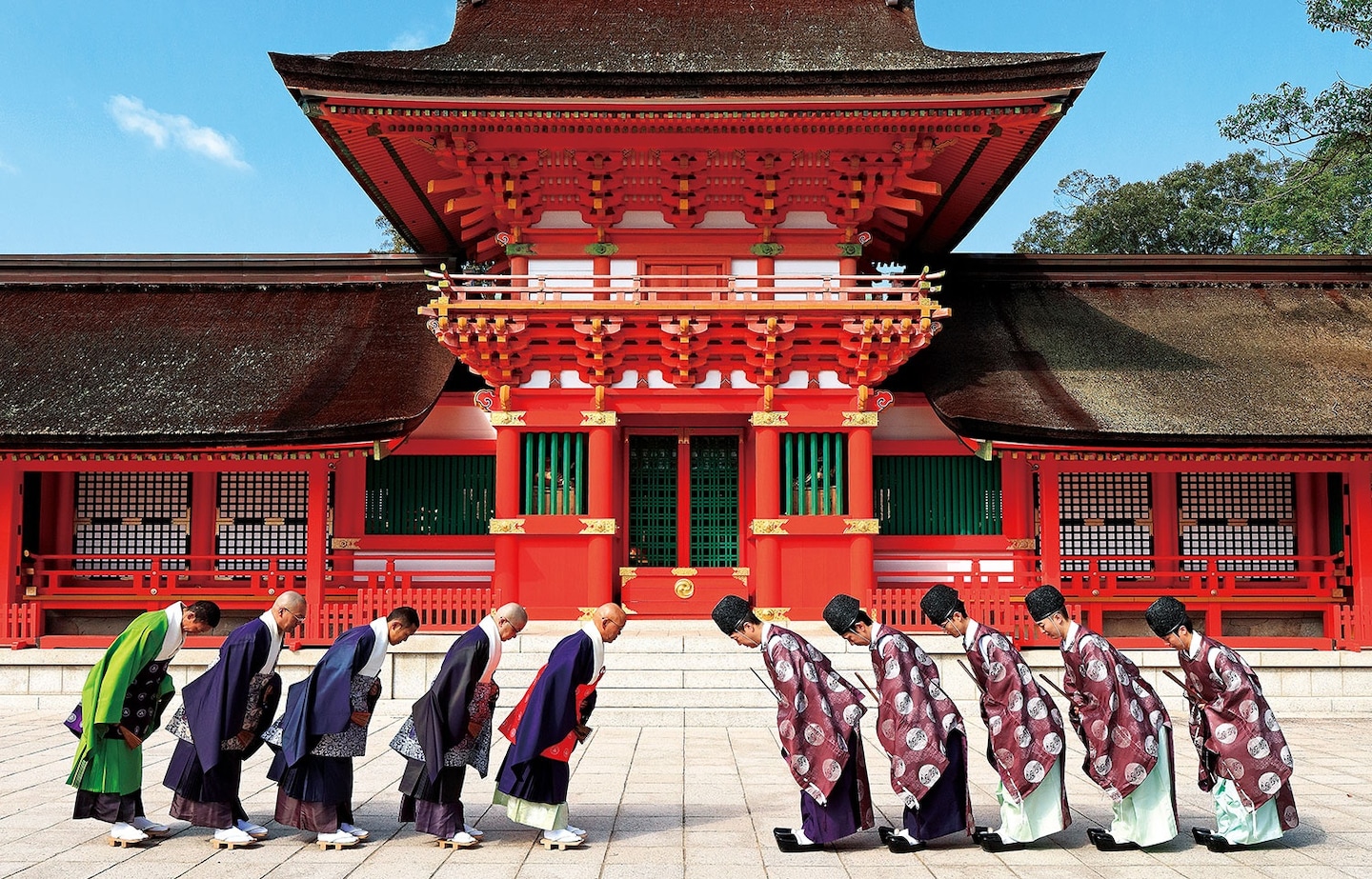
While Usa Jingu Shrine is the most prestigious shrine of the Shinto religion after Ise Jingu Shrine, it is little known, even among many Japanese. The shrine is not only an important part of Japan’s spiritual history, but the Kunisaki Peninsula nearby is a corner of Japan with a timeless quality and superb natural and cultural attractions.
By Gregory StarrAncient Origins
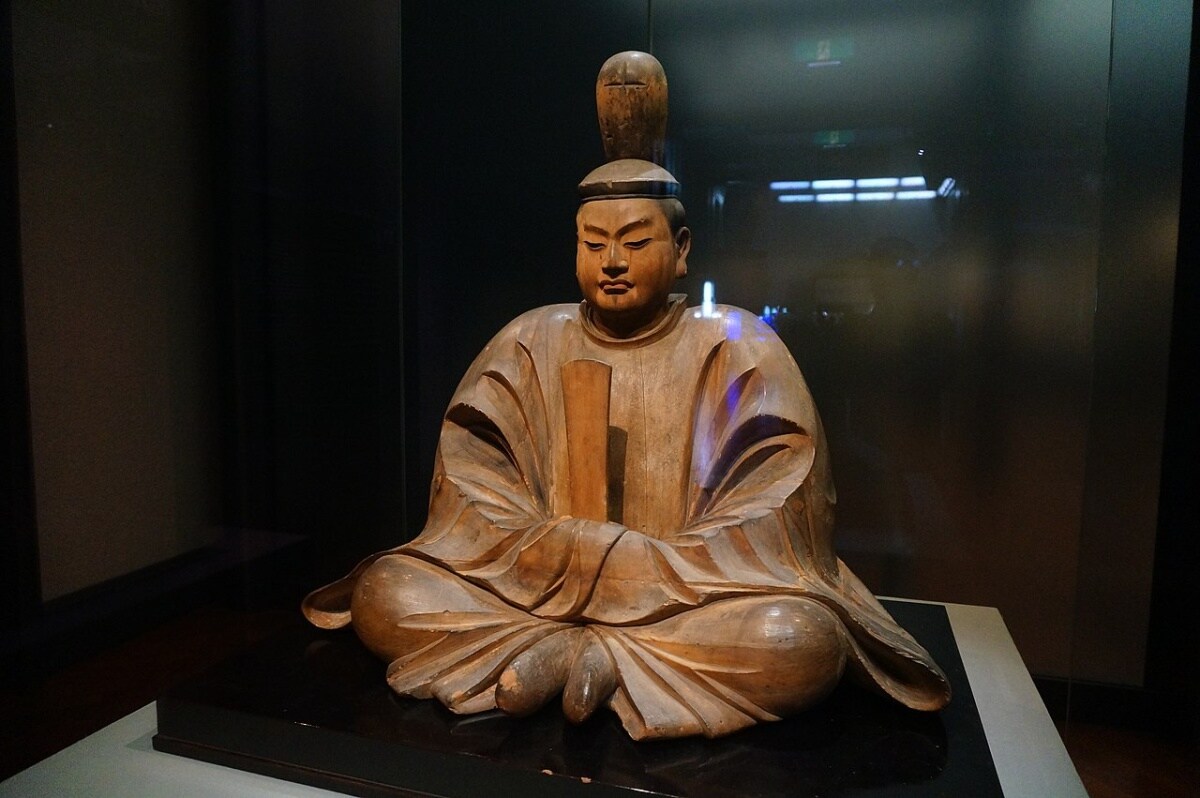
A statue depecting Hachiman, stored in the Tokyo National Museum
Usa Jingu Shrine sits at the neck of the Kunisaki Peninsula, on the northeastern coast of the island of Kyushu. It was established in 719, and dedicated to Hachiman, the god of war and culture, believed to be the deification of Japan’s fifth emperor. Today, of the 110,000 Shinto shrines in Japan about 44,000 of them belong to the Hachiman sect, and are branches of this main shrine.
A Beautiful Forest Location
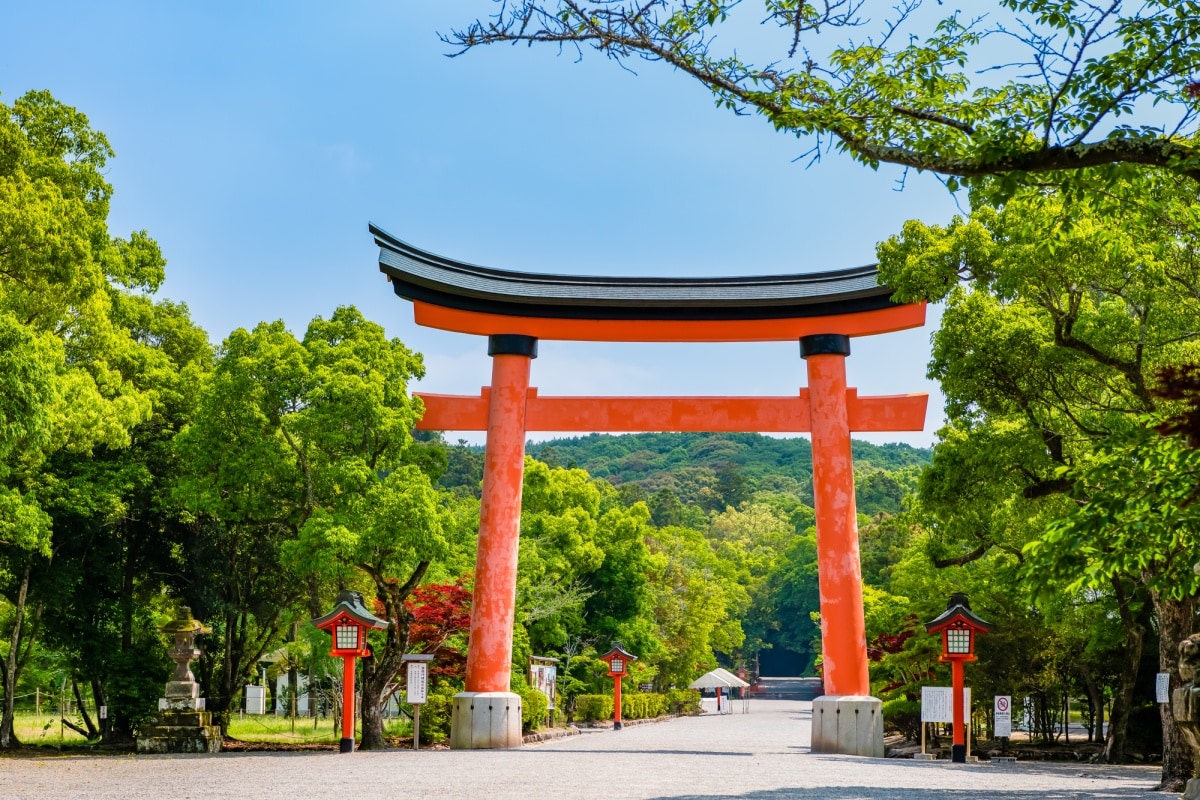
The massive vermillion torii gate at the entrance to Usa Jingu Shrine
The shrine is located in a forested mountain, divided into an Upper Shrine and a Lower Shrine. Its central hall was first mentioned in ancient chronicles during the eighth century, and is made up of three connected buildings. The central one is dedicated to Hachiman, while the other two enshrine the deities of his mother and his consort. There are some 122 structures of architectural and historic interest, many of them decorated in bright vermilion, on the shrine grounds.
The shrine is also important for its links to the relationship that developed between Shinto and Buddhism. This merge of beliefs resulted in the shrine/temple complex's amassing of so much power and influence that at one time it controlled up to two-thirds of the entire island of Kyushu.
Usa Jingu's Influence: Melding Shinto and Buddhist Beliefs
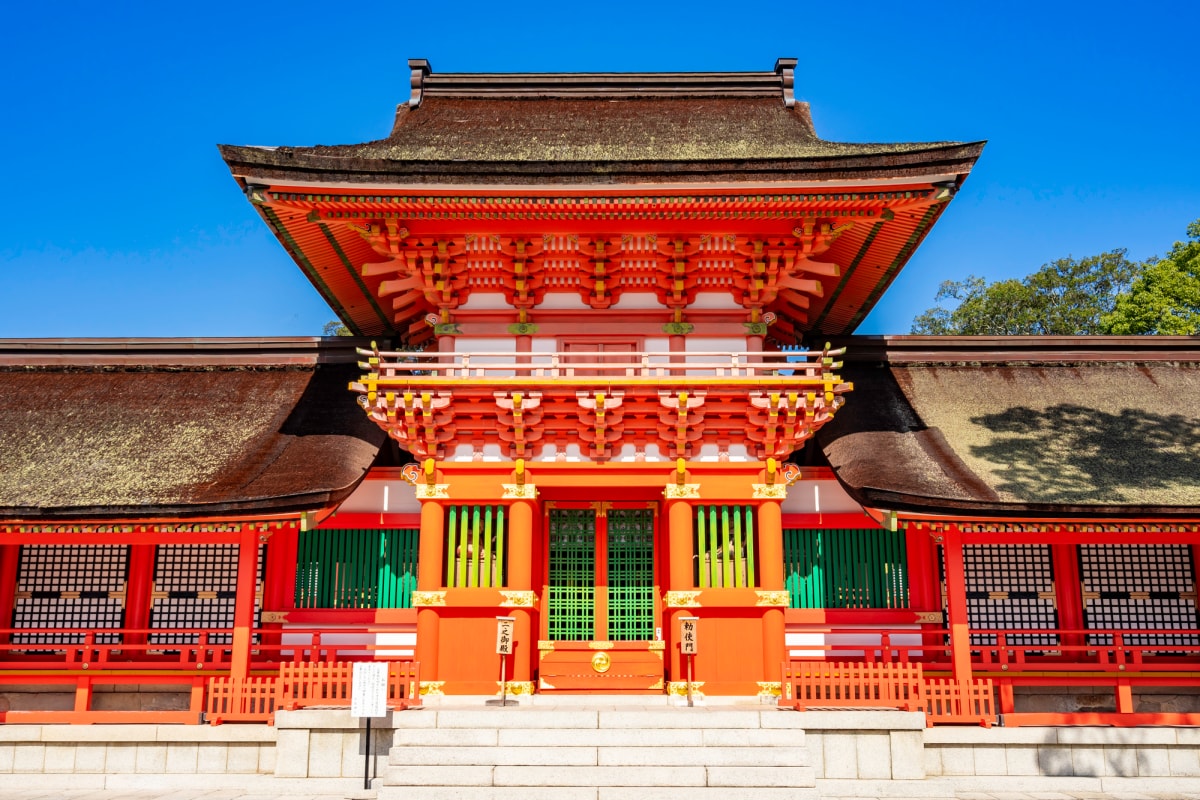
This promotional photograph of Buddhist monks and Shinto priests meeting in front of the Upper Shrine is meant to reflect the locations deep religious significance.
The melding of Shinto and Buddhist beliefs, which had an enormous impact on Japan's religious development, began in the mid-sixth century. The island of Kyushu was the point of entry for the Buddhist monks who brought teachings from the Asian mainland. Japan's native religion of Shinto had its origins in animism and believed natural phenomena had a spiritual essence or kami. The Shinto leaders welcomed the foreign religion, which brought centuries of learning from the mainland. Instead of seeing the Buddhist deities as a challenge, they saw the Buddhas as something to share.
Miroku-ji, A Buddhist Temple
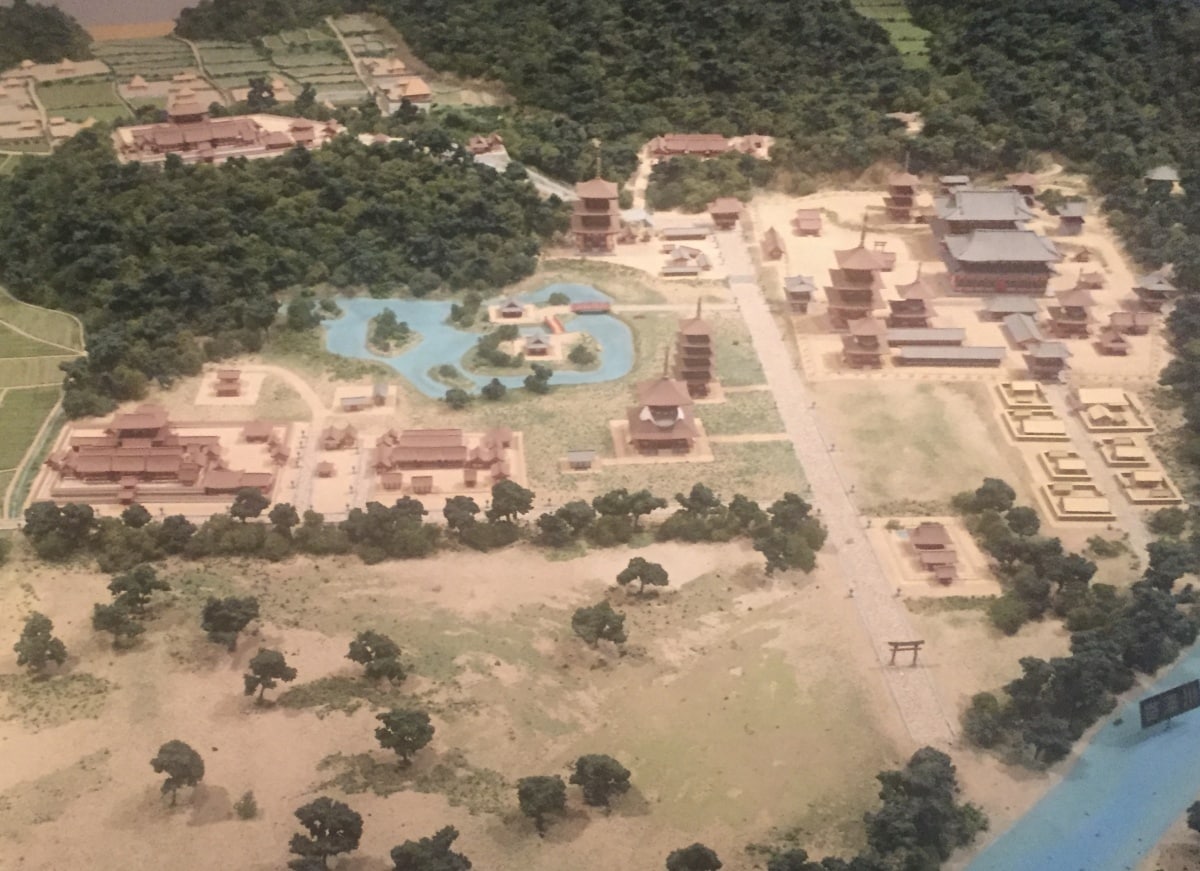
This rendering of the shrine and temple grounds before the temple was destroyed shows the way the religious buildings were integrated in the same location. The Mirokuji Temple is on the right of the broad path leading from the bottom of the photo.
Past the main entrance of Usa Jingu Shrine, off to the side, is a quiet, grassy area where visitors will notice a line of flat stones. These are the foundation stones that once supported large wooden columns, and are all that is left of the great Buddhist temple.
The Kunisaki Peninsula, and particularly Usa Jingu Shrine, is believed to be the origins of the merging of the two religions. As early as 741, construction was started on a Buddhist temple on the grounds of the shrine. Among the many buildings were two large gates, a main hall, a lecture hall, and several three-storied pagodas.
The Tokugawa shogunate was replaced by the imperial system during the Meiji Restoration of 1868, and Shinto was made the state religion. The new government ordered the removal of Buddhist elements from Shinto. Though many Buddhist temples, including Mirokuji, were destroyed, Buddhist influences in Shinto can still be found. Hachiman is both a Shinto deity, for example, and a Buddhist bodhisattva, and many of the architectural elements of shrines are believed to have Buddhist origins.
Usa Jingu's Influence: The Mikoshi

One of the mikoshi (portable shrine) being carried during the Great Summer Festival
The climax of most shrine festivals all over Japan centers around the mikoshi, or portable shrine used to transport the deities. They are used to honor the local deity by temporarily removing the kami from the main shrine and carrying it through the community to bring fertility and good fortune.
Though they come in all shapes and sizes, they have one thing in common: they originate from a practice first begun at Usa Jingu Shrine in 749. That year, the resident deity Hachimangu was transported to Nara to oversee the construction of the Great Buddha at Todaiji temple—a remarkable feat of some 600 kilometers over rugged territory.
The trip is celebrated at the Usa Great Summer Festival, the shrine's largest event, which is held every summer.
Some mikoshi are exhibited in the Treasure Hall on the shrine grounds. The fascinating displays include statues, swords, and other items of historical importance, including a number of National Treasures.
The Thrill of Horseback Archery
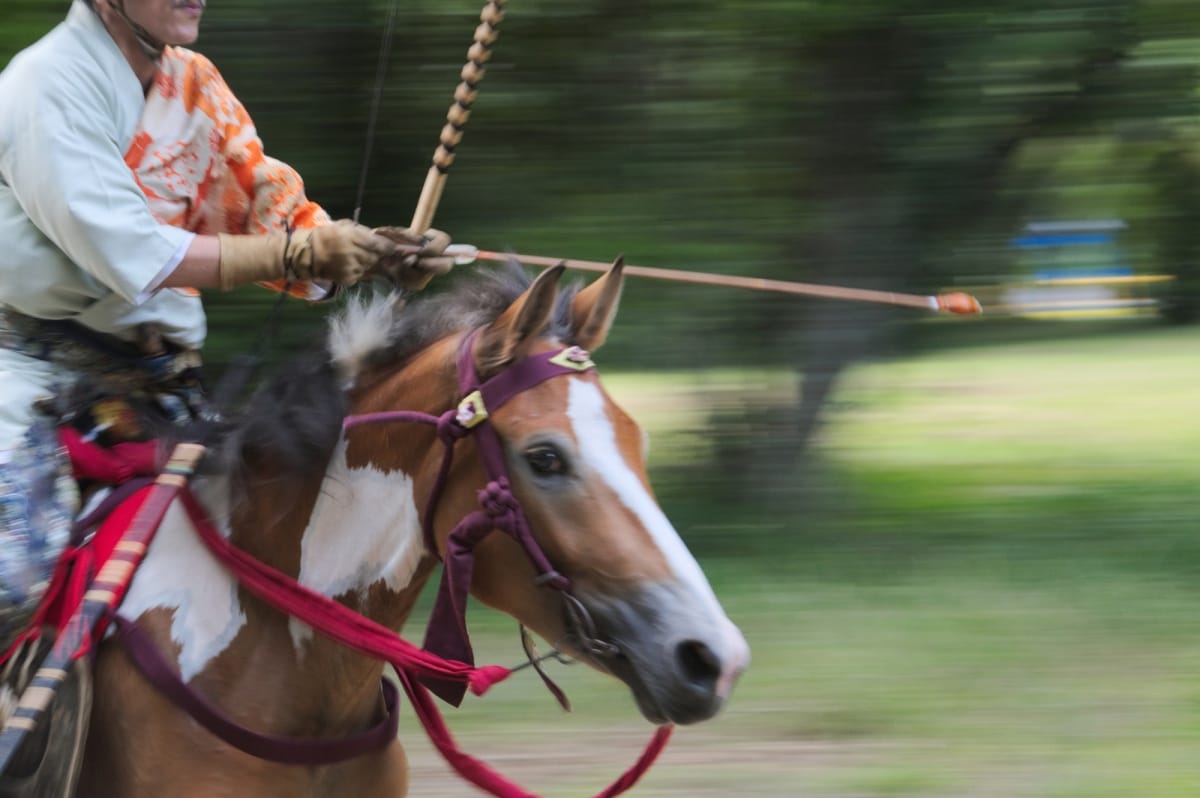
A horseback archer in action. They must pluck the arrow from the quiver, notch it, aim and fire at the targets while galloping at full speed.
Yabusame, an event performed by archers on horseback, is a sacred ritual held every year at the shrine during the summer season. It is believed to have its origins in the sixth century when the emperor ordered an archer to shoot three arrows from horseback here. The rules were codified over the years.
The event is held on a course of 210 meters near the entrance. Three targets made of wood are placed along the course, and 25 archers—all dressed in elaborate traditional costumes—take turns galloping down the course, pulling arrows from their quivers and letting them fly toward their targets. Although yabusame is held in many parts of Japan, it is thrilling to experience this event in the place where it all started.
How to Get There
From Oita Airport
Usa Jingu Shrine is about 65 min. by bus from Oita Airport.
From Kokura Station on Shinkansen Line
Usa Station is about 50 min. by train from Kokura Station.
The shrine is a 10 min. taxi ride or 20 min. bus ride from Usa Station.
Usa City website
Oita Prefecture website
Usa Jingu Shrine official website (Japanese)
More Kyushu Travel Options
Nanzoin: Discover Fukuoka's Reclined Buddha
The Perfect Weekend Tour of Fukuoka City
Defeat the "Attack on Titan!" in the City Where It All Started
Bamboo: the Secret to Takachiho’s Iconic Cuisine
Delicious Wagyu in Japan’s Volcanic Heartland



